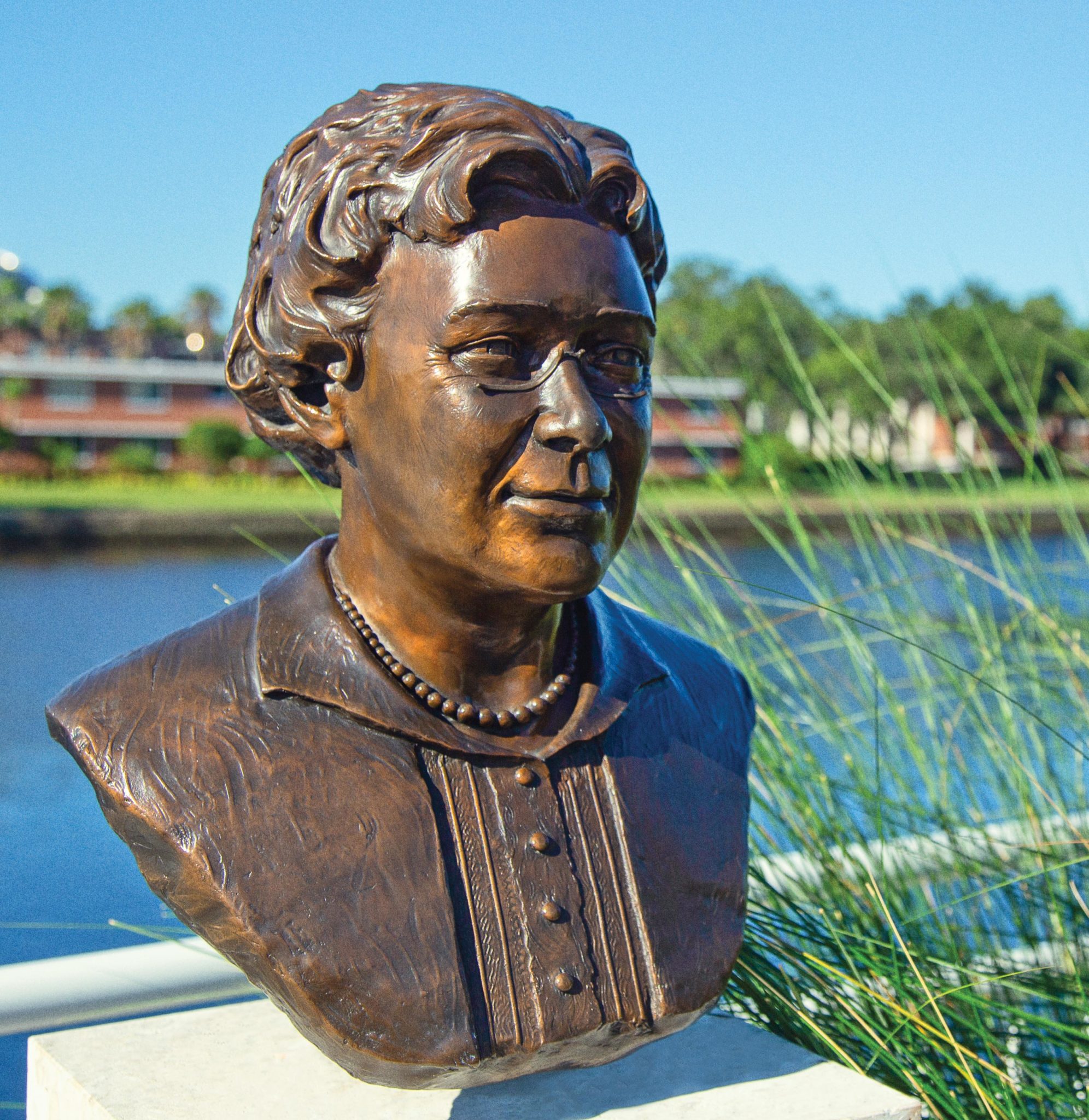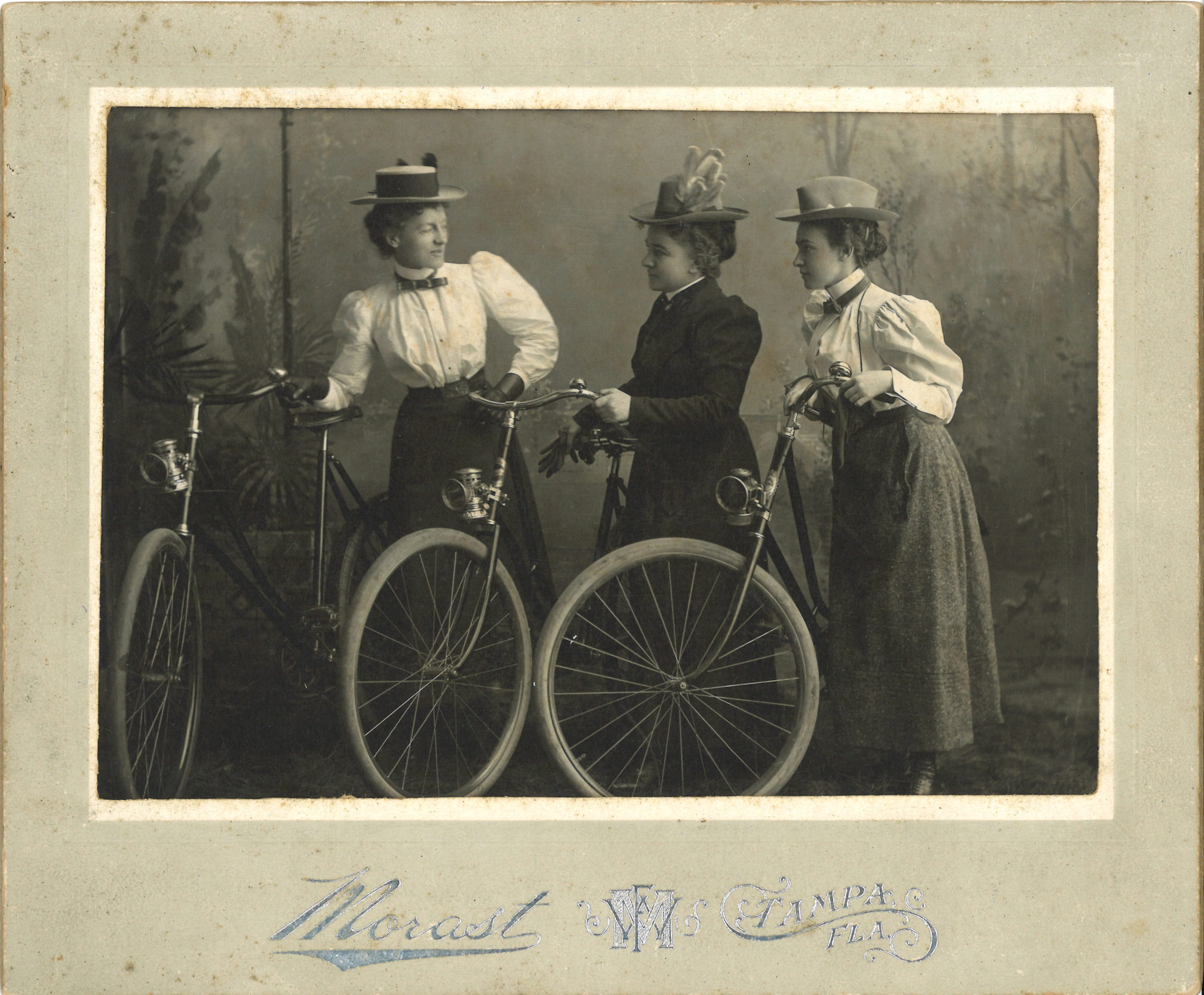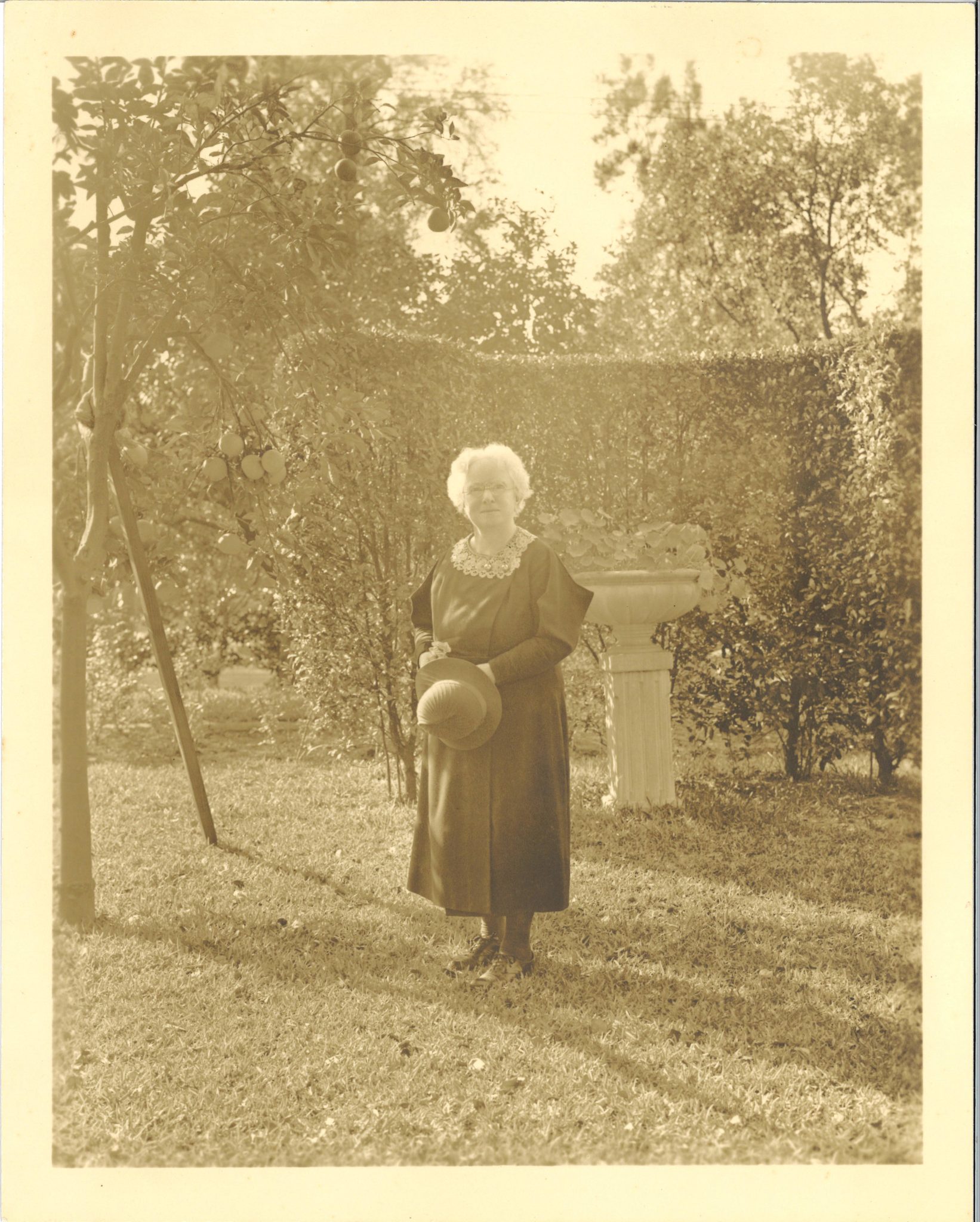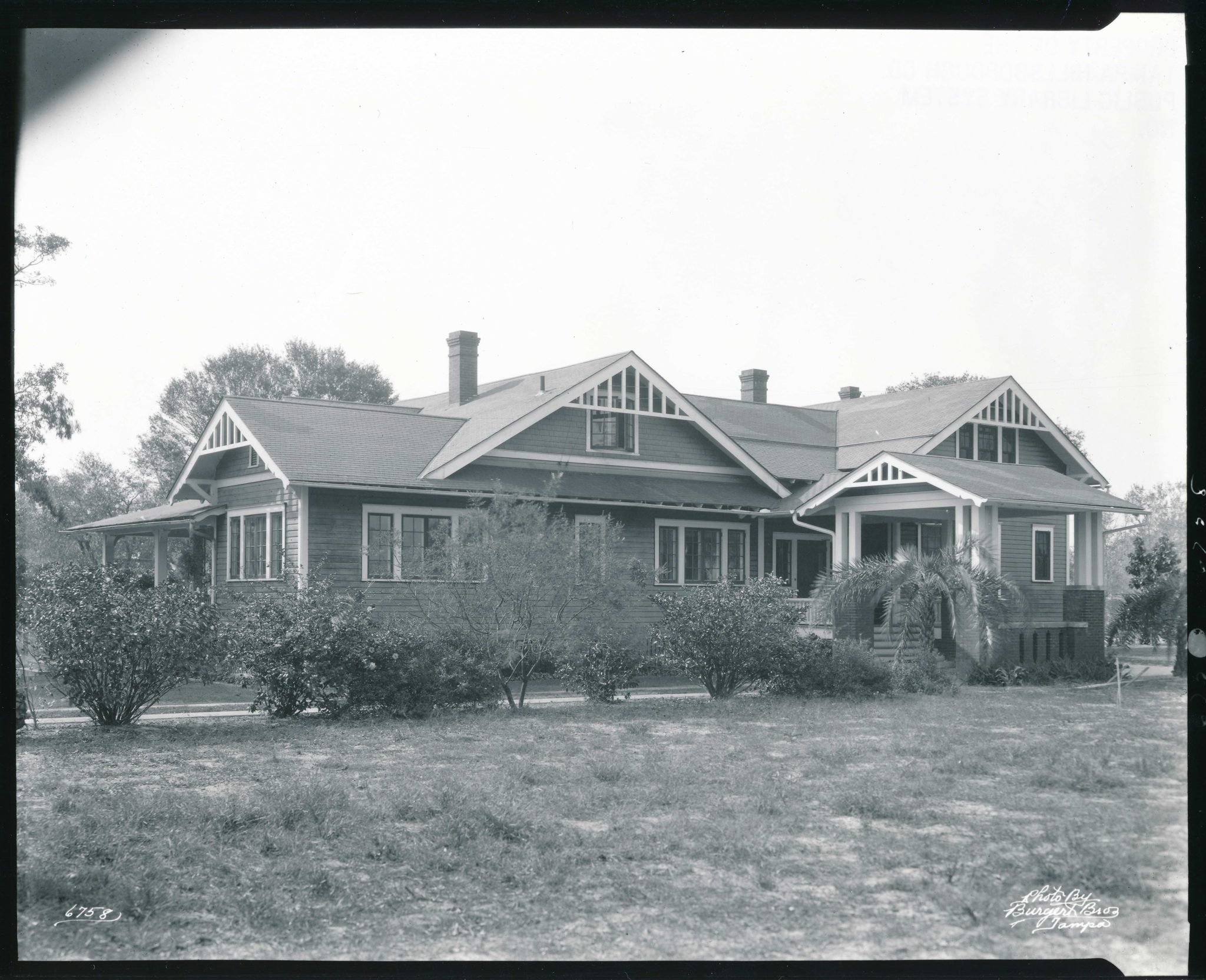Tampa’s Kate Jackson was a bold leader and entrepreneur who helped pave the way for future females. Born in 1857 to pioneering parents, her gender would keep her from attaining official leadership roles, unlike her brothers. But she wouldn’t let it stop her from making a significant impact throughout her community.
Jackson’s parents, John and Ellen Jackson, immigrated to the U.S. in the early 1840s from Ireland. John worked his way from New York to Tampa via New Orleans and St. Augustine, where he met and married Ellen Maher. They settled in Tampa, where John worked as a surveyor and operated a general store. He completed three surveys of Tampa, and his 1853 survey is still used as the legal reference for land in what is now Downtown Tampa.

The Jacksons were devout Catholics, which was somewhat uncommon in early Tampa. They funded the first Catholic parish, St. Louis Parish, in the 1880s (the precursor to Sacred Heart) and they sent Kate Jackson to Key West to one of the only Catholic girls schools in the state. Jackson enjoyed her time so much at the Mary Immaculate Convent that she worked with the Sisters of the Holy Names to start a school in Tampa. Two French nuns from Key West arrived in 1881 in Tampa to establish what is now the Academy of the Holy Names.
Jackson’s devotion to Tampa was almost as strong as it was to the Roman Catholic Church. While one of her brothers served as Tampa’s mayor for two terms and another became a doctor and medical school professor in New York City, Kate’s career was confined by the conventions of the time to what was called “women’s work.” The restrictions of the era did not preclude her from being a major shareholder in Citizens Bank (one of Tampa’s three major banks at the time), along with her brothers.

In addition to her efforts to bring the academy to Tampa, she also founded the Tampa Civic Association and pushed Tampa’s male politicians to accept funding for a public library from the Carnegie Foundation. She also spoke passionately about the need to clean up the city (including enforcing the municipality’s no spitting ordinance), and perhaps most importantly, about creating and maintaining public parks and recreation areas for children. It is in this last area that Jackson’s legacy is most obvious today. The Kate Jackson Recreation Center in Hyde Park is not only named in her honor, but it is on what was once her property. The center even has the same address as her home: 821 S. Rome Ave.
The path to becoming a city park and community center was not a straight one. Upon Jackson’s death, the property was turned over to the Catholic Church, which a month later converted the home to a kindergarten for Sacred Heart Academy. During World War II, the National Catholic Community Service used the home as a USO residence club for the wives and families of servicemen who were training in Tampa. As many as 30 women could be accommodated, dormitory style, in the spacious home. During Thanksgiving in 1944, the USO club hosted 60 servicemen and their families there.

The City of Tampa acquired the home in 1944, but use by the USO did not end until after the close of World War II. In March 1946, city workers began the task of remaking the home into a community center. By 1947, though, Jackson’s name was no longer associated with the property and instead it became known as the Anderson Community Center.
The Jackson home, built in 1911, was falling into disrepair by the late 1960s and by 1972 it was being called dilapidated, a fire trap and a monstrosity. The once-grand home could not survive many years of deferred maintenance and neglect at the hands of a cash-strapped city. The house finally met its end in 1973.
The demolition of Jackson’s home actually served as a new beginning for her being recognized for her contributions toward recreation and community spirit. The property was renamed in her honor in 1975 and a new community center soon opened onsite.
The new center was used daily and as the Hyde Park neighborhood experienced a renaissance, the need for a bigger and better Kate Jackson Community Center grew as well. By the late 1990s, the city began to make improvements to the park, including the installation of the now-iconic lions fountain at Rome and Morrison avenues. New wrought-iron fencing and sidewalks were installed and three years later, ground was broken on a new, 8,000-square-foot community center. The new center was dedicated on May 19, 2003 by outgoing Tampa Mayor Dick Greco.

While the community center is Jackson’s most visible lasting legacy, her immediate legacy upon her death may better sum up how she lived her life. Her final will outlined the distribution of her substantial wealth. Though several organizations within the Catholic Church (totaling $33,000) were the largest beneficiaries, a variety of other organizations and individuals received bequests as well. Presuming that her male relatives were already well-positioned to be successful, Jackson recognized several nieces and grand-nieces in her will (though she did give money to a favored nephew, John A. Jackson, Jr.), according to biographer Doris Weatherford.
Perhaps more interesting, she also gave $5,000 to Christmas Rahming and $2,000 to Felix Bain. Rahming and Bain were African-American employees of Jackson’s, described in her will as “my faithful servants for many years.” Rahming, who was 70, and Bain, 47, lived in individual homes on her property.
Given the racial attitudes of the time, which are reflected in her description of Rahming and Bain, Jackson’s gifts of what in today’s dollars would amount to around $40,000 for Bain and nearly $100,000 for Rahming were extraordinarily rare, showing the true character of Jackson – a woman ahead of her time.

Rodney Kite-Powell is a Tampa-born author, the official historian of Hillsborough County and the director of the Touchton Map Library at the Tampa Bay History Center, where he has worked since 1995.
Want more Tampa Bay history? Read Steep(l)ed In History: Sacred Heart Catholic Church & St. Paul AME Church.
The post Kate Jackson: Ahead of Her Time appeared first on Tampa Magazine.